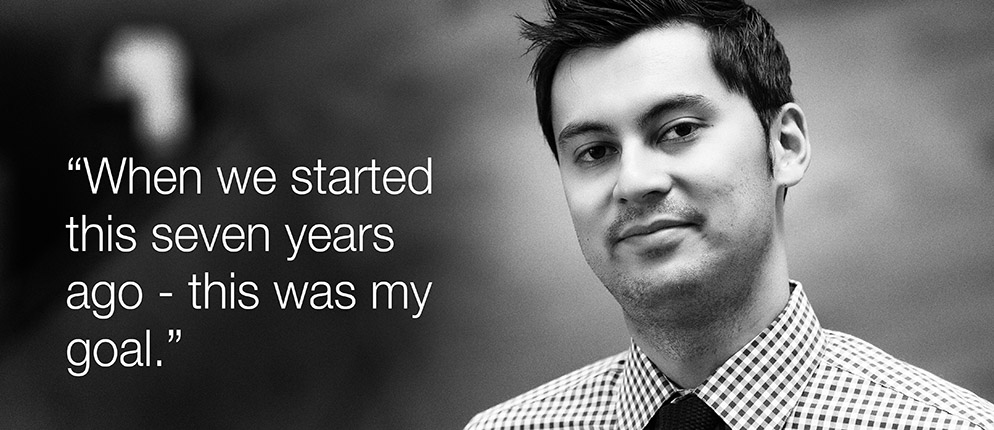The new face of cancer treatment
UofGH program head starts first-of-its-kind exercise in cancer program for Toronto
Canada's largest cancer centre has its first exercise in cancer program, led by Dr. Daniel Santa Mina, UofGH’s program head of kinesiology.
The program’s role at the Princess Margaret Cancer Centre is one that marks a significant shift in cancer treatment. It clinically integrates exercise into a patient’s spectrum of care.
“Surgery and radiation have negative side effects. We treat the pain, we treat the nausea, we provide psychotherapy for anxiety and depression – we treat all these things. But what about the loss of quality of life, the loss of physical mobility, the increase in fatigue?” asks Dr. Santa Mina.
“You can’t leave these untreated. And exercise has proven to be one of the best – if not the best – therapies for that.”
An incredible amount of research today shows that exercise unequivocally benefits just about every facet of quality of life. The most recent phase of research shows that survival has improved – the final capstone.

The Wellness & Exercise for Cancer Survivors program (WE-Can) is now available to prostate and breast cancer patients at the Princess Margaret, with the goal to expand to all other cancer types. Patients are seen by a team of people who specialize in oncology and rehabilitation: physicians, kinesiologists, physiotherapists, patient advocates and educators, exercise physiologists.
“Considering the level of individualization needed for every person, you need everybody in that room. This ensures we’re able to consider everything to deliver a safe and effective exercise program.”
The clinical and research parts of the program work in conjunction, and include fitness assessments with a home-based exercise program. Patients are sent home with exercise manuals, and given equipment like exercise balls, mats and resistance bands. There are follow-ups in the short and long term to look at things like survival advantage, disease progression, and disease recurrence.
“When we started this seven years ago – this was my goal,” says Dr. Santa Mina.
That year, he led the first study to be conducted at Princess Margaret looking at the role of fitness for cancer patients. Focusing only on prostate cancer patients at the time, Dr. Santa Mina and his team showed that those who were more physically active prior to surgery had better health outcomes after surgery.
“What this did was put an exercise physiologist in the oncology department at the cancer centre.”
It was the beginning of many significant findings to come for he and his team, and was echoed – loudly – in the field.
In 2010, a crucial event: the American College of Sports Medicine published guidelines for exercise and cancer. Then came recommendations from the Canadian Cancer Society, the American Cancer Society, and the National Comprehensive Cancer Network. Independent oncology organizations were now advocating exercise as part of cancer treatment. Research in the field was booming.
Dr. Santa Mina and his team have been granted about $3-million in research-related funding in exercise and cancer, much of the activity to occur at WE-Can. Prostate Cancer Canada, the Canadian Breast Cancer Foundation, the Canadian Institutes of Health Research, the Princess Margaret Cancer Foundation and the University of Guelph-Humber have all contributed.
Funders of a global project are also contributing. The Movember Global Action Plan – which looks at prostate cancer, exercise and metabolic health - are allocating $8.8-million AUD to this growing field. Dr. Santa Mina is the site lead for this study in Toronto.
“A lot’s happened in seven years,” says Dr. Santa Mina, enthusiastically.
“Imagine walking into a cancer centre, and seeing men and women on a treadmill, walking, lifting weights, dancing. Cancer patients can have a lot of life to live. We want to optimize that time, and exercise is the best at doing that when it’s a part of other treatments.”
“What we’re doing is changing the system. We’re changing the face of cancer treatment so that more people can return to a quality of life they enjoyed pre-cancer.”


